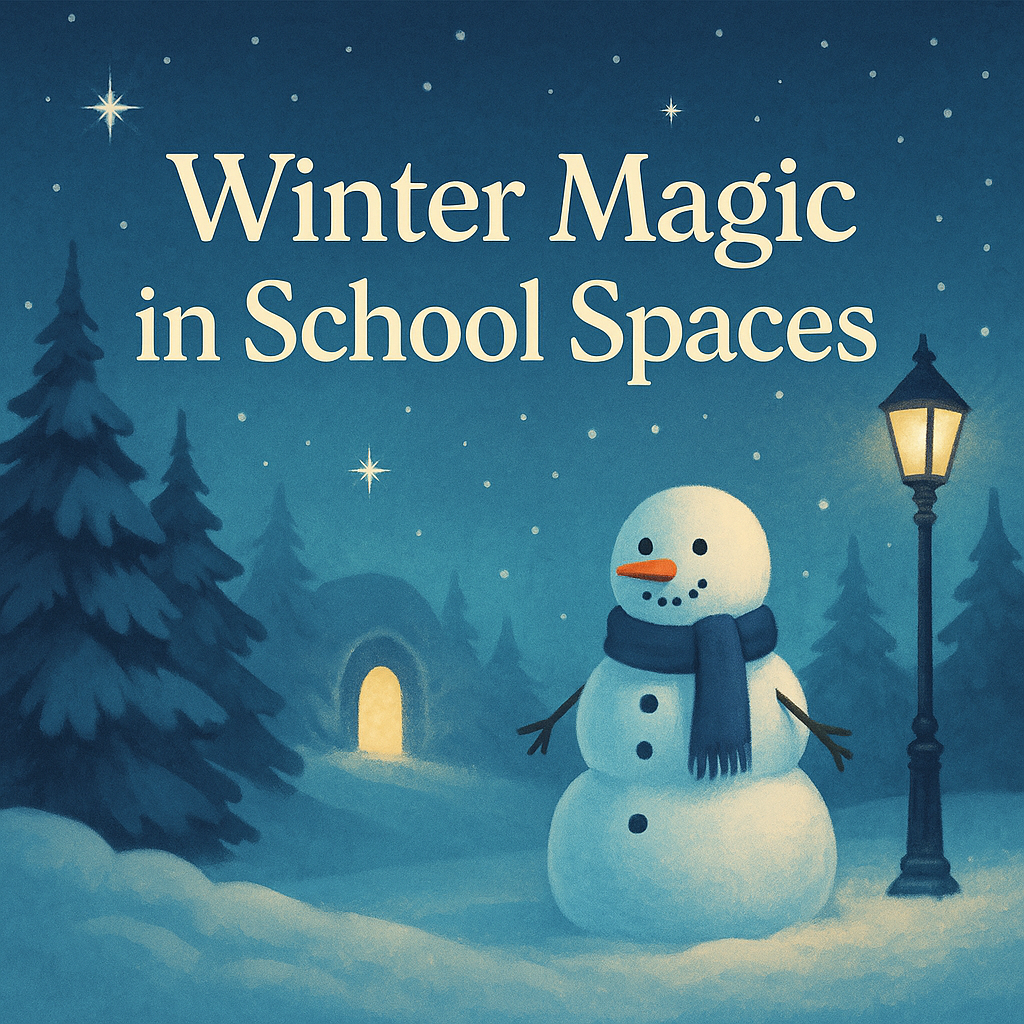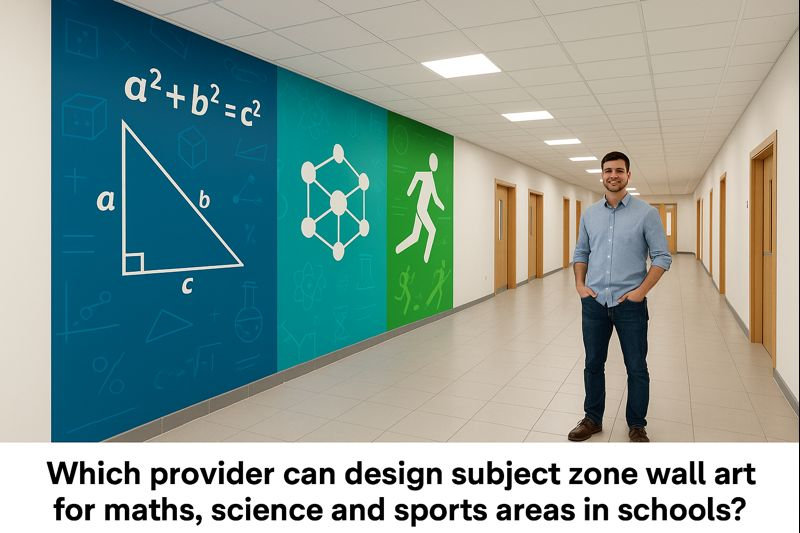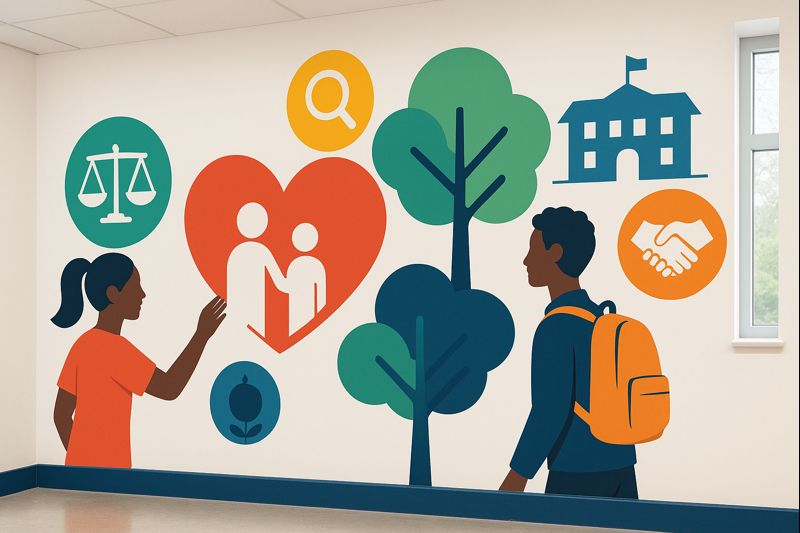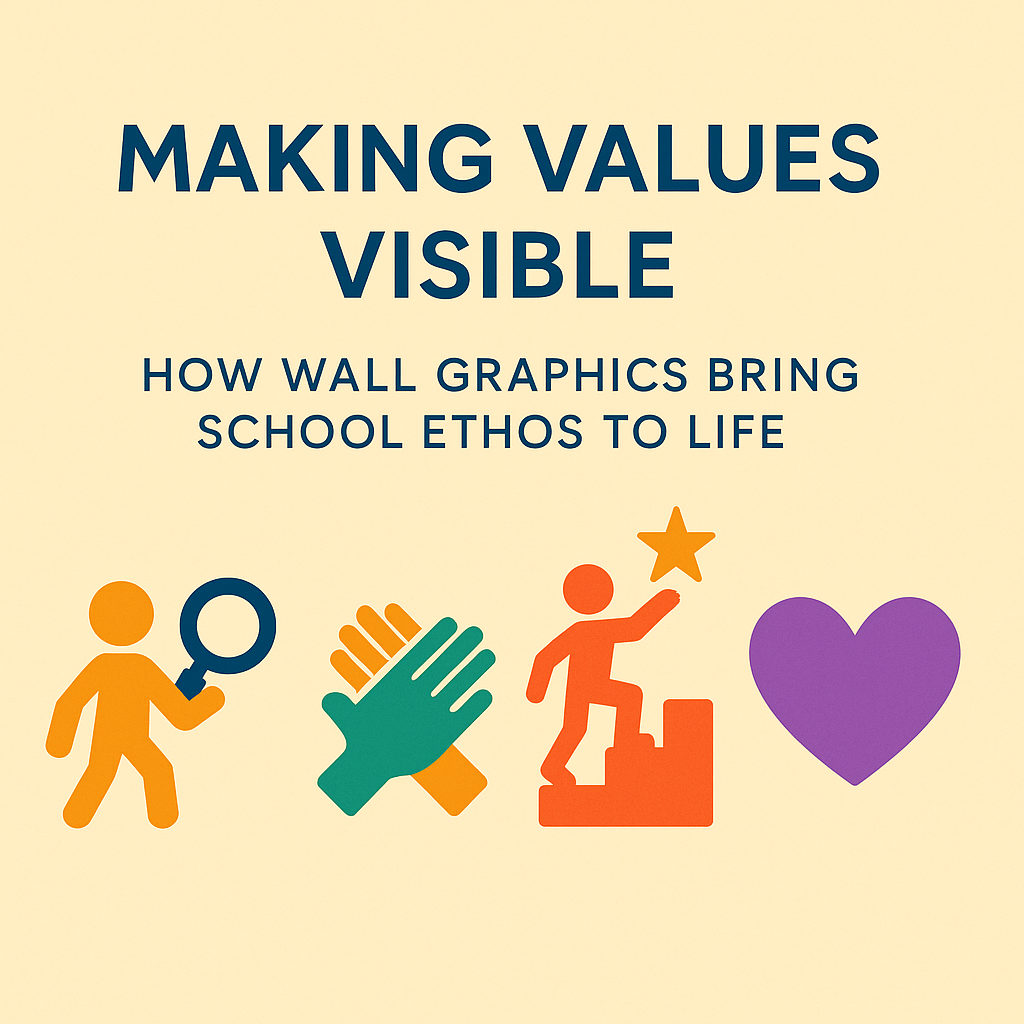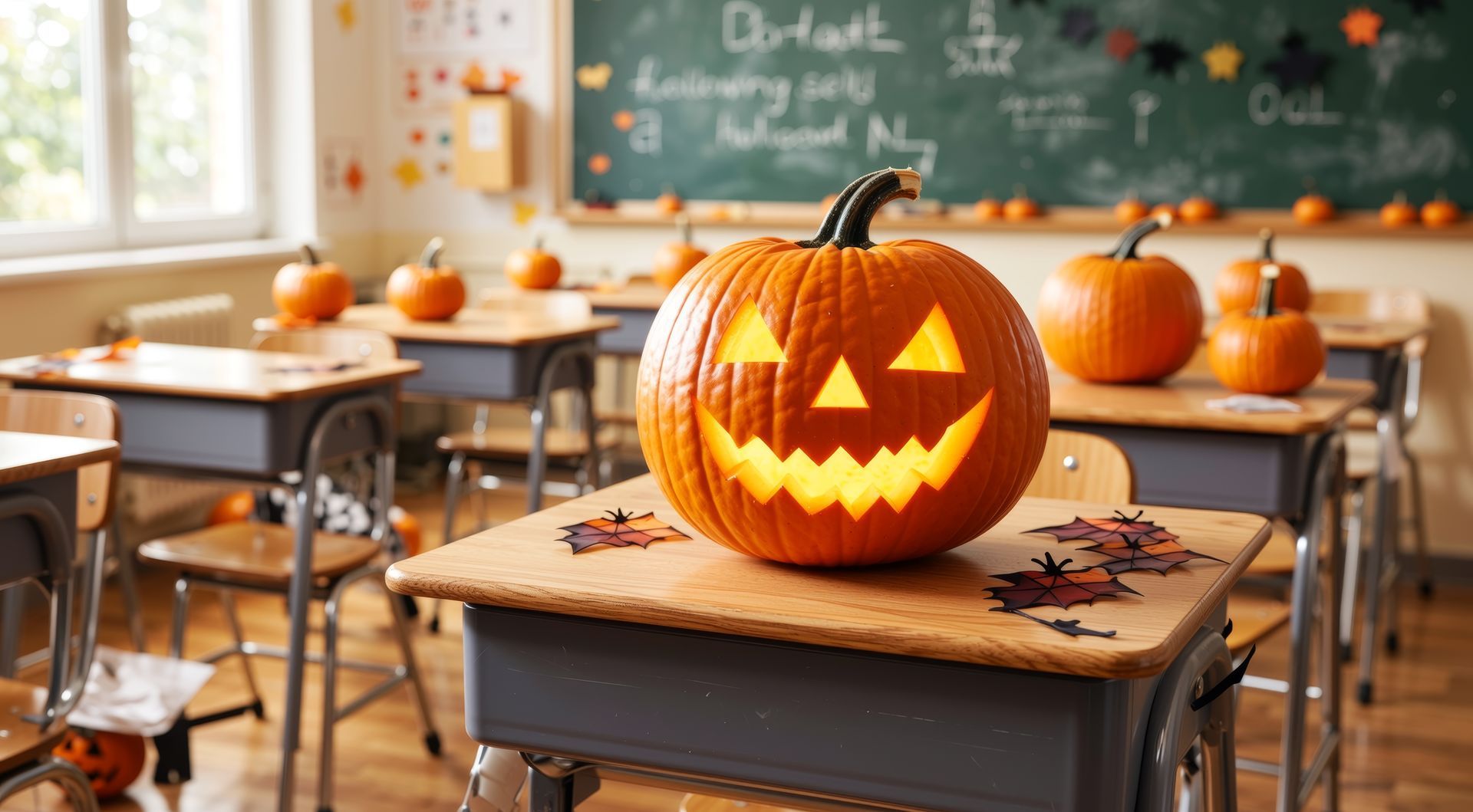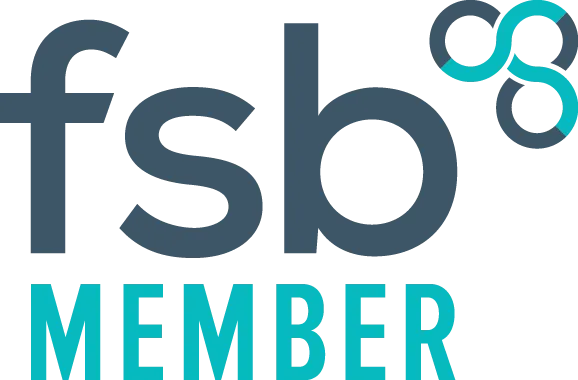Impact on schools-37
Creating wall spaces allows students to engage directly with the art on the walls and enhances the learning environment by emphasising student-centred learning practices.
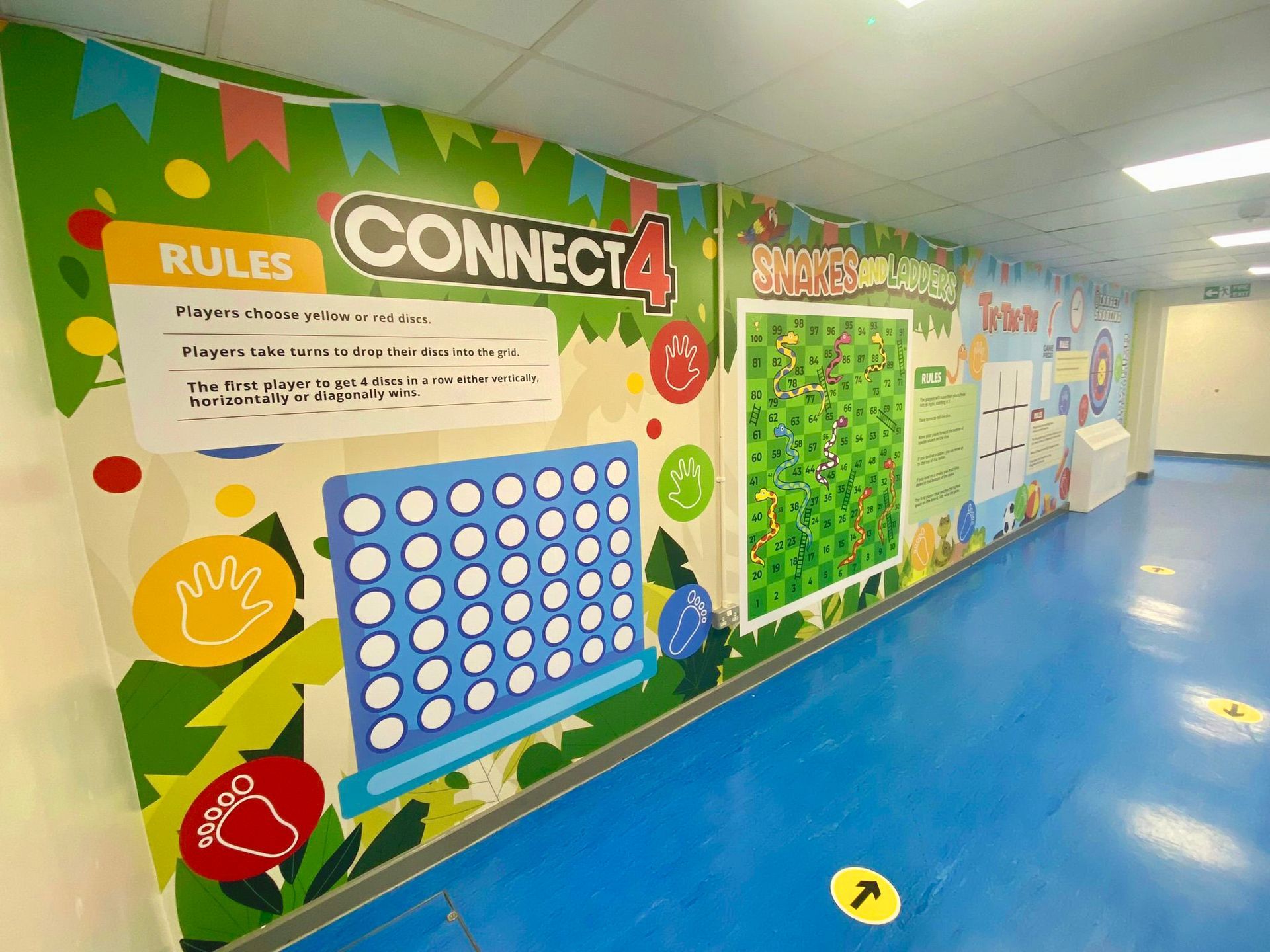
Crafting Wall Spaces That Are Interactive and Captivating
- Creating wall spaces for students to interact with wall art can enhance the learning environment. Showcase a dedication to interactive and student-focused learning practices. To effectively design and implement engaging interactive wall graphics, follow these steps;
Crucial Design Factors for Captivating Environments.
- Utilise dry-erase boards or paint on the walls to create spaces for students to write down ideas and work together on problem-solving tasks.
- Chalkboard paint adds texture and visual charm to surfaces. It enables students to express their creativity using chalk.
- Add a coat of paint underneath the layer to make walls that can hold magnetic letters and shapes.
- Set up boards for tasks, like putting together words or patterns and designing charts.
Augmented Reality (AR):
- Incorporate augmented reality markers that students can scan using tablets or smartphones to activate animations, videos and interactive content that enlivens the wall graphics.
- Add QR codes that direct to materials such as resources, educational videos and quizzes associated with the wall information.
- Let's set up wall touchscreens to show lessons, educational games and digital stories.
- Set up kiosks featuring software for students to delve deep into various topics.
Interactive Learning Tools and Brain Teasers:
- Let's make some puzzles that students can put together related to geography, history or science.
- Create charts that allow students to engage with the content directly. Think of periodic tables, multiplication grids, and language conjugation boards.
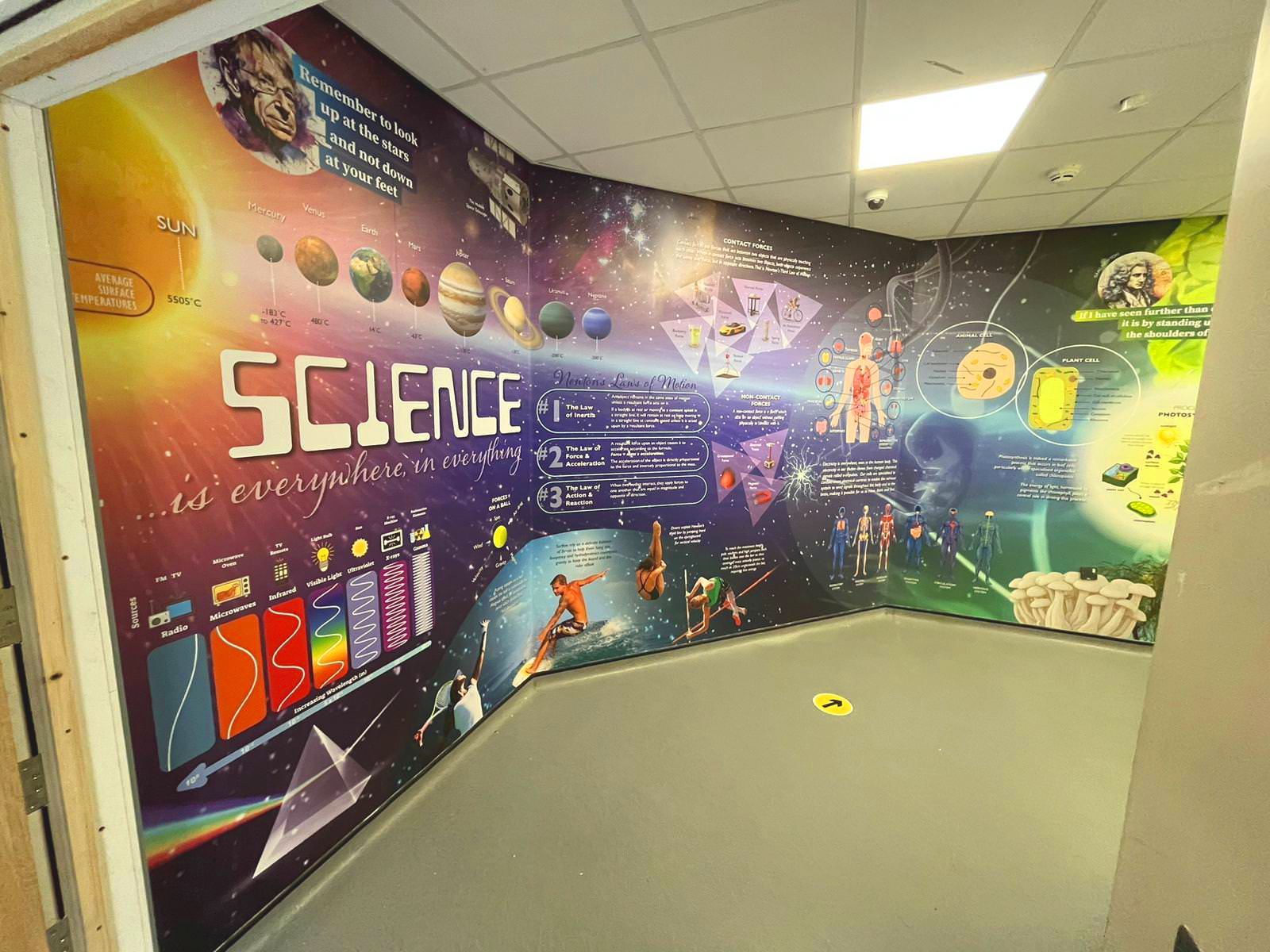
Optimal Positioning for Greater Influence
- Let's set up sections on the classroom walls for learning tasks like solving math problems, conducting science experiments, or holding creative writing sessions.
- Designate activity corners for subjects with elements tied to the curriculum to promote collaborative work and practical learning experiences.
- They are transforming school corridors into engaging learning paths by incorporating games, puzzles, and reality elements for students to interact with during breaks between classes.
- Rotate Exhibits Strategically: Utilize hallway segments to rotate displays that align with the curriculum themes to maintain a dynamic and up-to-date experience.
- Bring to life murals that invite students to share their creativity and thoughts by adding their artwork and messages.
Collaboration Areas:
- Establish designated areas with surfaces for writing and magnetic walls to encourage group work sessions and project teamwork.
Cosy reading corners;
- Design spaces themed around literature experiences where students can converse about books together, immerse themselves in augmented reality stories, and take part in reading challenges.
- Book Review Panels could incorporate platforms for students to share their thoughts and book suggestions to foster a reading community.
Development Approach
The process of designing ;
- Involving students and teachers in the design process ensures that the visuals align with objectives and promote engagement.
- Get the assistance of designers to craft top-notch visuals that captivate and enhance the learning experience.
Selecting the Material;
- Opt for non-toxic, child-safe materials when selecting items to engage with.
- Choose eco alternatives by selecting materials that match the school's dedication to environmental sustainability.
- Have a professional handle the installation to guarantee safety and a pleasing outcome while avoiding alignment problems or potential damage concerns.
- Make sure to place features at heights that kids of all ages can reach easily.
- Remember to clean and maintain your features to ensure they work smoothly and keep the graphics looking new and appealing.
- Let's schedule updates to add interactive features and maintain an engaging and lively atmosphere.
Exciting and lively wall spaces that encourage interaction
A whiteboard for science experiments;
- The classroom design plan includes dry-erase paint on most of the walls. This will allow students to draw diagrams of the body and scientific equations and record their observations and theories.
- Influence: Bolster engagement in science classes, fostering a space for students to delve into creativity and showcase their comprehension effectively.
Magnetic Mathematics Wall;
- This magnetic wall is designed for students to engage in math activities. Students can use numbers and symbols to work on math problems and equations or play educational games.
- Enhanced Effectiveness: It enhances the joy of learning math by making it engaging and interactive for students to grasp and actively engage with concepts visually.
The historical corridor of augmented reality (AR).
- A hallway adorned with timelines depicting history and notable figures showcased alongside AR markers that activate content on a device scan—showcasing animated visuals and videos of historical events.
- Students are actively involved in history lessons, which brings events to life and helps them remember better.
- By creating a reading nook featuring reality book covers, digital storytelling displays, and a writable wall where I can jot down book reviews and set reading targets.
- It encourages a passion for reading. Establishes an environment for students to exchange their literary journeys.
Closing Remarks
Captivating wall graphics in settings like schools or classrooms can craft a vibrant and exciting atmosphere for learning that effectively promotes involvement and student-focused education modalities. These visual elements elevate the school's charm and offer significant educational advantages by transforming learning into an interactive and hands-on experience that captivates students' attention and engagement. This method enables students to establish connections with the content they are studying by sparking curiosity, fostering creativity, and instilling a passion for acquiring knowledge.
